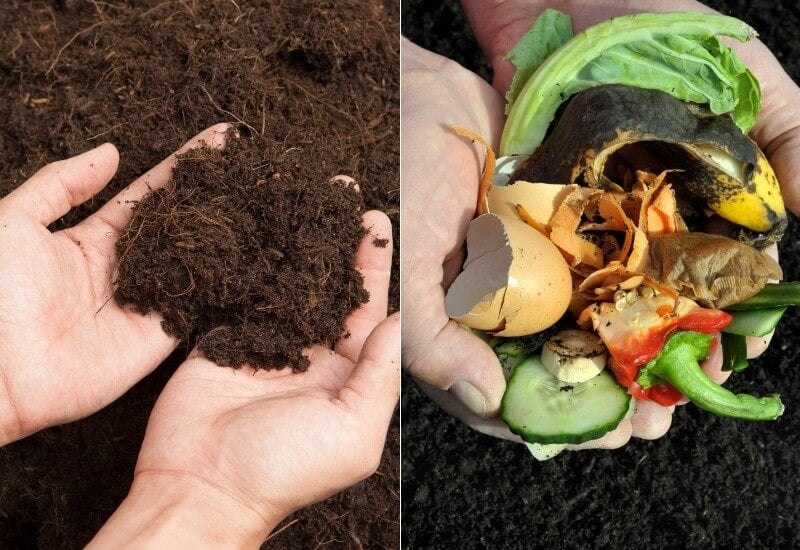
Compost is a familiar term for most gardeners. But, what’s humus?
No, it’s not the healthy chickpea dip in the grocery store (although there’s no reason you couldn’t use hummus as a compost ingredient).
Humus is the end result of the decompositions process, whereas compost is a word that identifies a phase of the decomposition process where decomposing plant material provides the most benefit to the soil. While humus is an identifiable, physical soil ingredient, compost is a little tougher to quantify.
Understanding humus is the key to understanding why compost is such an amazing soil amendment.
If you’re looking for an easy answer as to whether or not you should add compost to your garden, the answer is yes. Compost makes all soils better.
But, if you want the long, detailed answer, let’s start by digging in to some soil terminology.
Organic Material vs. Organic Matter
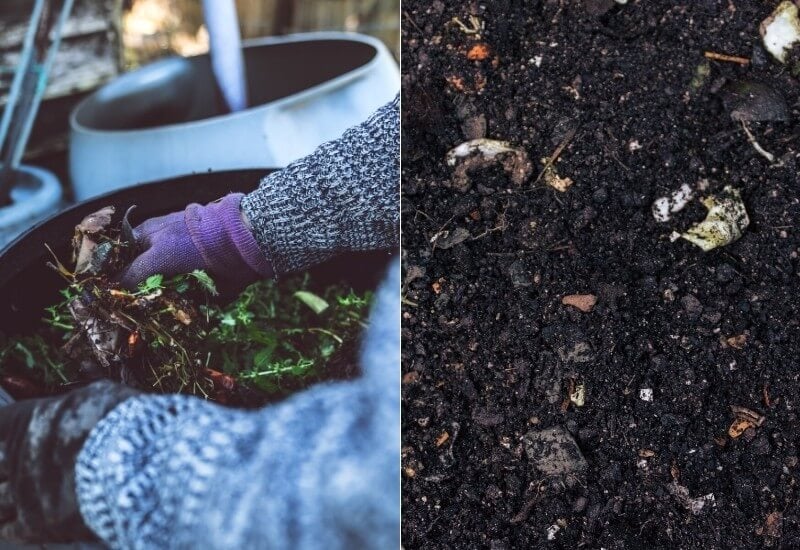
In order to understand the difference between compost and humus, you must understand the difference between organic material and organic matter, and how each one affects the soil.
Soil has five different ingredients:
Parent material, gas, and moisture combine with soil organic matter to create an environment for living organisms. The amount of living organisms in a soil is directly related to how much oxygen, moisture, and food is in the soil.
Soil organic matter refers to two different stages of dead plants/animals:
1. Organic Material
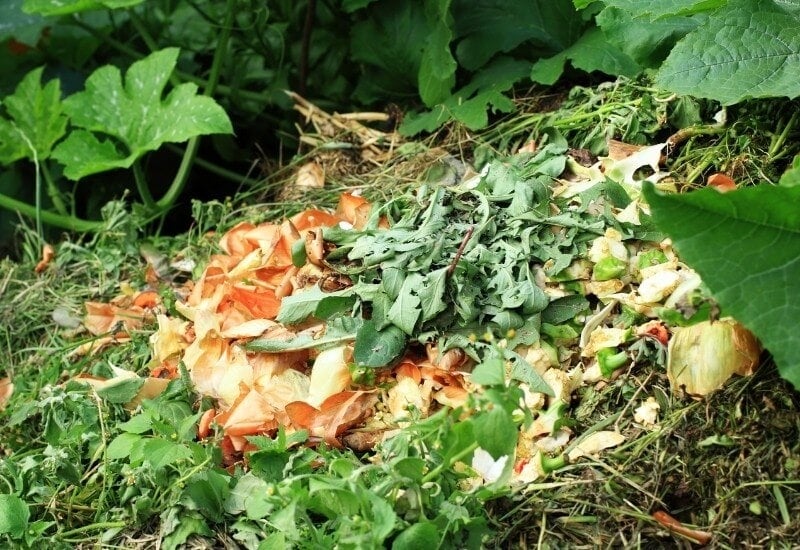
Organic material is dead animal/plant materials that are in an active stage of decomposition.
Dead insects, grass clippings, animal carcasses, and worm castings are all examples of organic material.
In some areas, the organic material may be so abundant that the soil develops an organic layer, which is a top layer of soil made completely of decaying organic material. A forest with a thick layer of leaf litter will develop an organic layer, as well as lawns with poor aeration that develop thatch.
2. Organic Matter
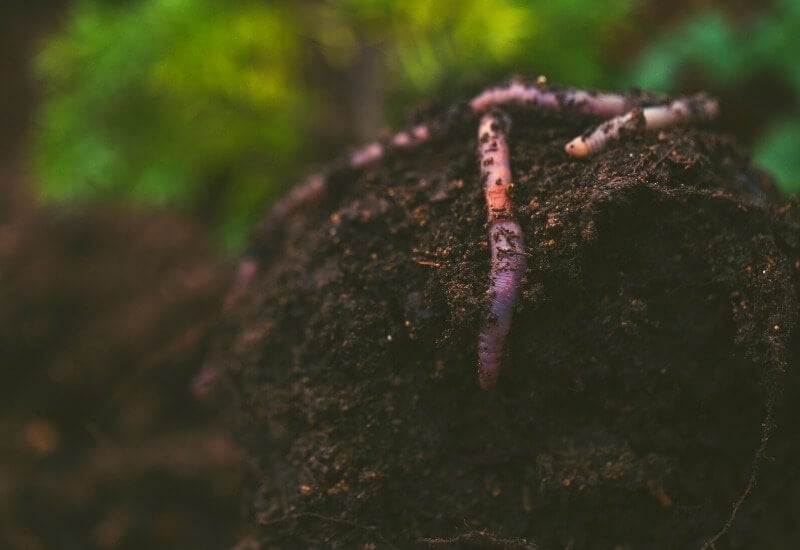
Organic matter is the final, fibrous, stable material left after organic material has completely decomposed. Organic matter is humus.
Organic matter is inert; it does not have any effect on the chemical properties in the soil.
Nutrients are chemicals. Organic matter has been broken down so completely that it cannot release any more nutrients into the soil, so its only function is to help maintain a spongey, porous soil structure.
Organic matter is essentially the bones of organic material. Once the meat has been completely broken down and absorbed into the soil, all that remains is a skeleton.
Compost vs. Organic Material
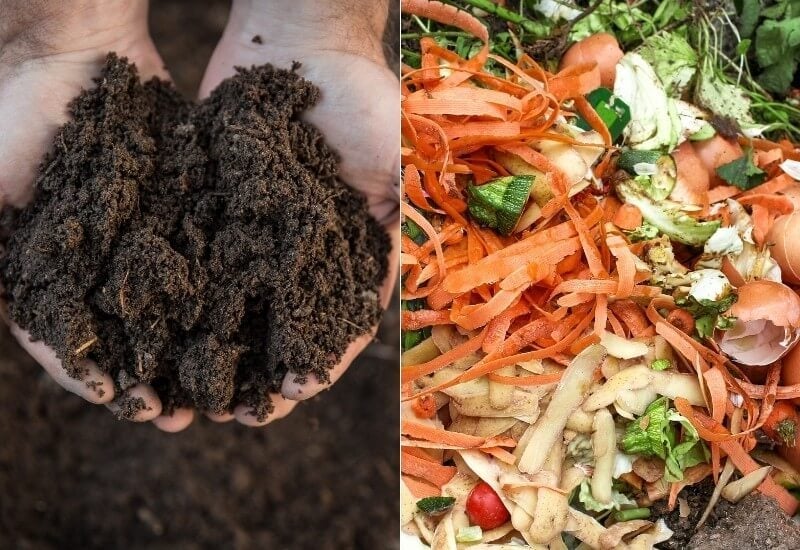
So, if organic material is dead leaves, grass clippings, vegetable scraps, etc., then isn’t organic material just another name for compost?
Nope.
Compost
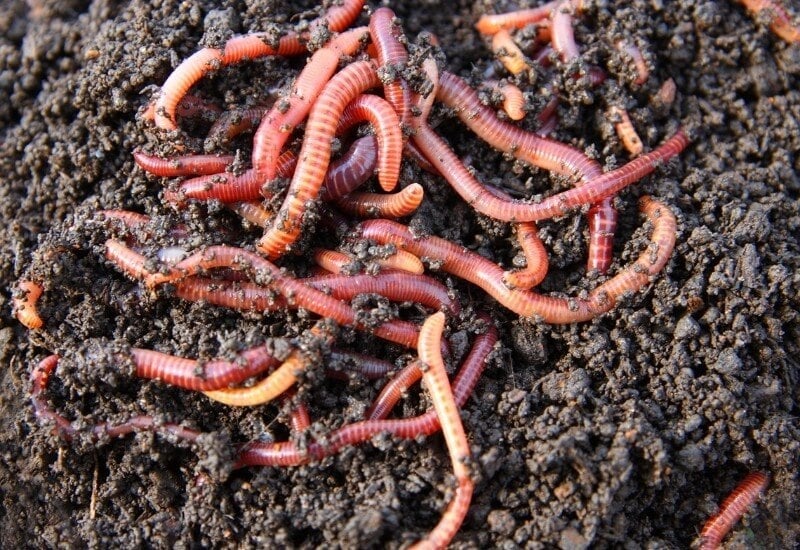
Compost piles are built with dead plant materials like dead leaves, grass clippings, shredded paper, shredded cardboard, vegetable scraps, and manure. Compost is not made with the remains of animals or animal products.
When these materials are organized into a pile and kept moist, bacteria enter into a feeding frenzy and break down the materials at the center of the pile. This is what causes a compost pile to heat up in the middle.
As the bacteria run out of food, the pile cools. This is when the pile should be turned to introduce fresh ingredients into the center of the pile so the bacteria can repopulate and break down the new material.
When the pile stops heating up after turning, it is aged enough to add to the soil without causing nitrogen burn. This is what we refer to as compost.So, compost is organic plant material that has been manipulated into decomposing faster than it would under normal circumstances.
As compost decomposes, bacteria release nutrients from the organic materials.
By the time compost has aged enough to be added into the soil, there will be a mixture of humus and organic material, although the organic materials will be too small to be identified.
Therefore, compost is a term that defines a stage of decomposition between 100% organic material and 100% organic matter.
There has been enough decomposition to release plant-available nutrients, but there is still enough bulk to help improve the soil structure.
Organic Material
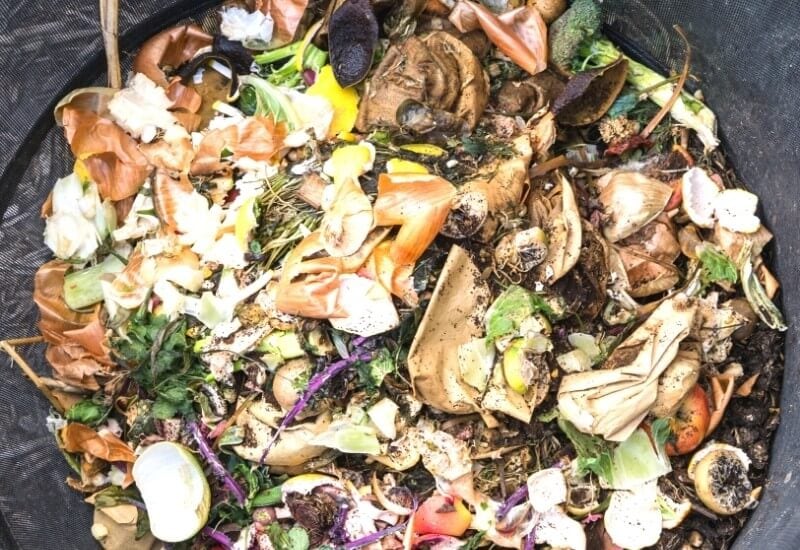
Although you would have to use organic materials to make a compost pile, organic materials are simply dead plants/animals that are on/in the soil.
A dead leaf in a compost pile is an organic material, and a dead leaf on a lawn is organic material. It doesn’t matter how much they have decomposed.
Some organic materials may never decompose, depending on the type of material and the climate.
Skeletons are organic materials, but they can take decades or even centuries to decompose, and they are certainly not recommended for compost piles.
Decomposition requires moisture, so organic materials in hot, arid climates may not ever break down.
Logs or branches in a desert climate may sit idle for years before they begin to decompose, but they are still considered an organic material. However, they are obviously not compost.
What is Humus?
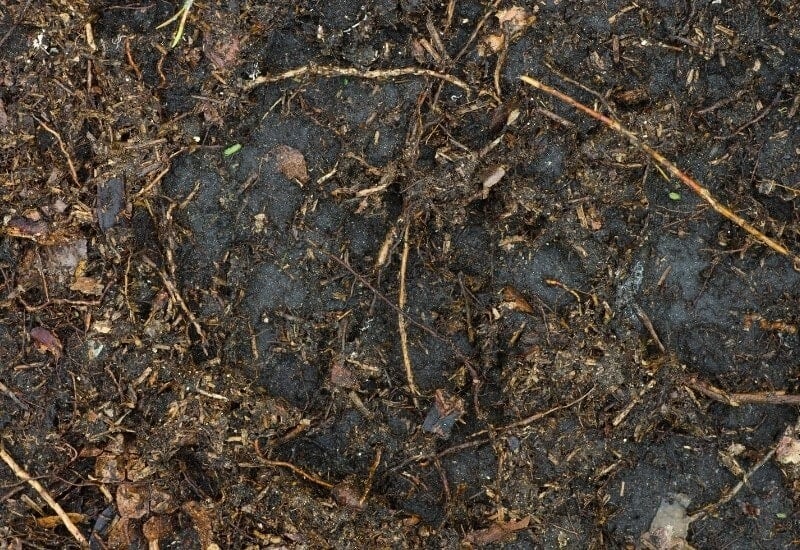
Humus is the skeleton of organic materials.Each living organism will eventually die and decompose. Once a plant or animal dies, other animals, insects, and bacteria begin to break down the tissue and release waste into the soil.
Each organism in the chain of decomposition produces waste that becomes food for another organism. Eventually, waste is broken down so thoroughly that the only thing that remains is the inert core of the original tissue.
All of the nutrients, proteins, and minerals that were bound together in the original animal, insect, or plant has been released into the soil in their fundamental, plant-soluble forms.Humus is microscopic.
It is not the visible, fibrous remains of a leaf or stem. It is a dark, spongey, porous material that is a stable part of the soil. Some scientists argue that humus is not even real.
They state that organic material is always decomposing, and that there is no such thing as a stable organic material.
It’s true that eventually, humus will degrade and lose its light, spongey texture. However, degrading is not the same as decomposing.
And while the debate continues as to whether or not humus is truly stable, there is no question that organic matter can remain in soil for decades, while organic material decomposes in a few short years.
The Difference Between Organic Material, Organic Matter, Humus & Compost
Now that we’ve defined organic material, organic matter, humus, and compost, let’s compare them for a quick overview:
Organic Material:
Organic Matter:
Humus:
Compost:
Benefits of Adding Compost to the Soil
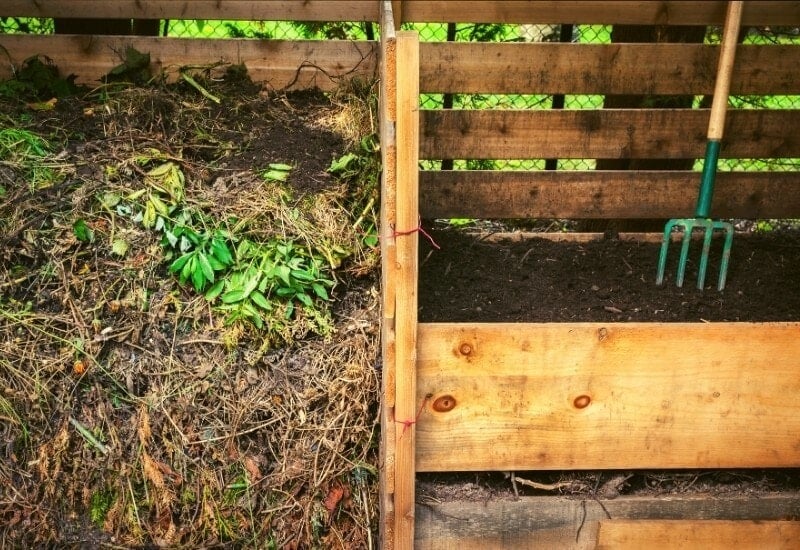
So, what’s so great about compost? Why is compost held up as a magic soil amendment? What about humus?
Great question.
Imagine you have a pillow tree in your back yard. Each fall, thousands of tiny pillows fall onto the ground, and you rake them up and throw them in a pile.
Over time, bugs and bacteria move in to your pile of pillows and begin ripping them open, revealing stuffing and vegetable powder.
Once the bugs and bacteria have ripped through all the pillows, you’re left with a powdery pile of stuffing and torn fabric.
Next, you add this mixture into the soil. The mixture attracts earthworms and bacteria, and they begin to pull the stuffing deeper into the soil and separate the nutritious powder from the stuffing. The powder becomes fertilizer, and the stuffing gives the soil a fluffy texture.
After a few years, the powder has been completely separated from the stuffing.
The plants have absorbed the fertilizer, and the only thing remaining from the original pile of pillows is small pockets of stuffing scattered throughout the soil.
In this example, the pillows are like leaves, twigs, or vegetable scraps. During the composting process, different bugs and bacteria tear through these materials and begin to release the nutrients bound up inside.
When you add compost into the soil, the available nutrients are quickly absorbed by the surrounding plants.
Initially, the compost increases the volume of the soil because it is bulky.
Over time, the remaining organic material is slowly decomposed, and the remaining nutrients are absorbed, resulting in a consistent, slow-release fertilizer.
As these bonds are broken, the compost loses volume, and the soil begins to shrink.
However, the humus remains in the soil, providing a much smaller, but much more stable, boost in porosity.
The humus will exist in the soil long after the nutrients have been absorbed by surrounding plants.
How To Get The Most Out Of Your Compost
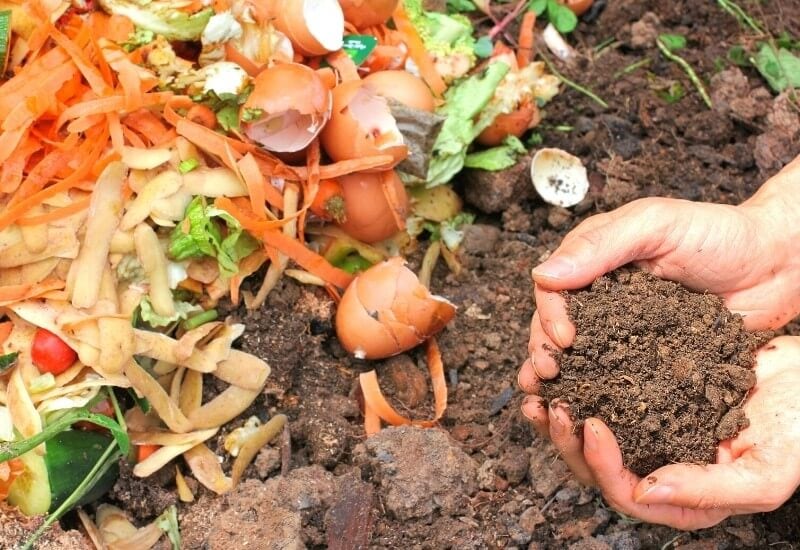
The most prominent benefit of adding compost into the soil is that it acts like an organic, slow-release fertilizer.
High-quality compost will release a burst of nutrition when it is applied, and then continue to release nutrients for the next few years, depending on the climate and the rate of decomposition.
A secondary benefit of adding compost into the soil is that it acts like a sponge, which increases porosity and helps improve soil structure.
This is most pronounced when compost is fresh, and it will decline as the compost breaks down over time.
Compost provides nutrients and improved soil structure for a few months to a few years, depending on how quickly the bacteria break down the remaining organic matter, and how mature the compost was when it was applied.
While humus plays an important role in sustainable soil improvement, it’s impossible to find pure humus as a soil amendment.
The only way to add humus to soil is to add compost and wait for it to decompose.
In order to take full advantage of compost, you should apply it annually to lawns and gardens.
If you add compost yearly, you will be able to maintain a fertile, spongey topsoil layer that resists compaction and invites trillions of beneficial organisms.
This compounding effect will begin to work deeper into the soil each year, which will encourage roots to expand and access more moisture and nutrients.
Use Compost As A Topdressing
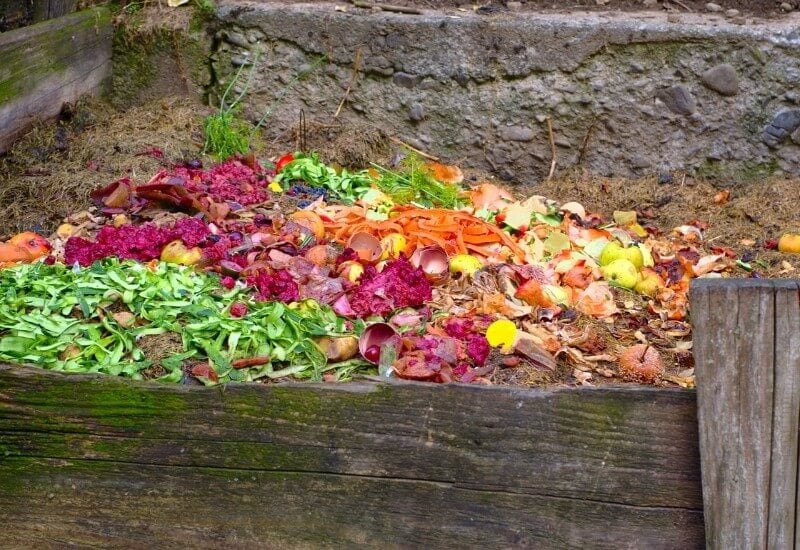
Each spring, dethatch and core aerate your lawn, then spread a thin layer of compost over the top and fill in the holes.
This is called topdressing, and it is the most effective way to improve soil in an established lawn.
Use Compost As A Mulch
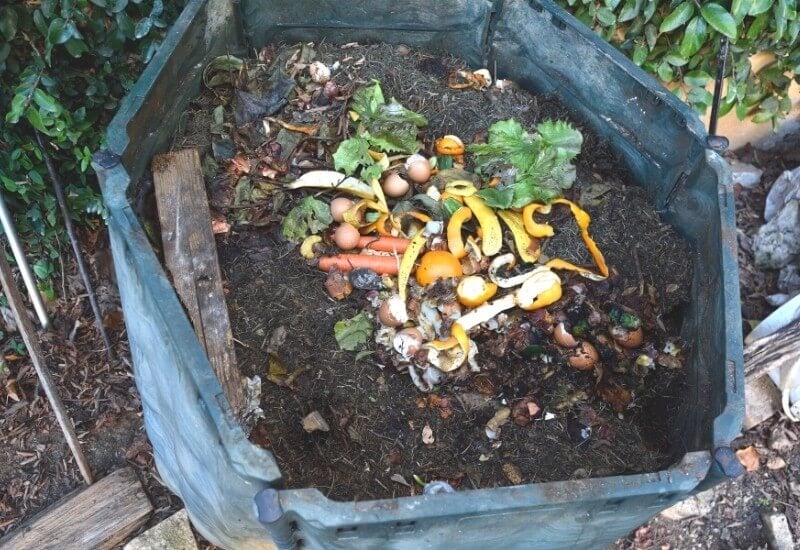
Compost makes a great mulch around established shrubs and trees. High-quality, weed-free compost can suppress weeds and increase water-holding capacity, which can help cut down on fertilizer and irrigation costs.
Use Compost As A Soil Amendment
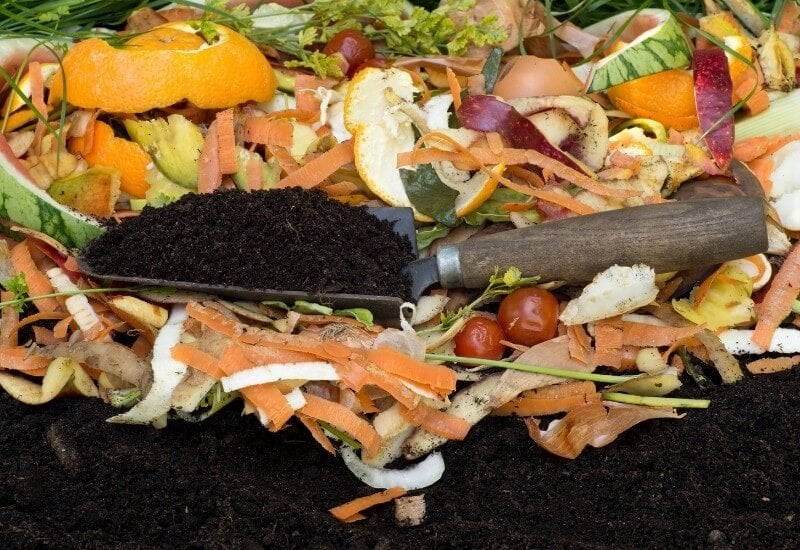
The most obvious and common use for compost is as a soil amendment.
Simply mix in a few inches of compost each spring before you plant, and eventually you will create a dark, crumbly topsoil that produces healthy, vigorous plants.
If you order compost from a garden center, make sure you are getting a high-quality, weed-free product.
Topsoil is not the same as compost, so don’t be fooled by titles such as “organic topsoil” or “composted topsoil”; these titles are marketing ploys to get you to pay more for large piles of dirt.
So, are compost and humus the same thing?
No.
Are they both beneficial?
Yes.
While the terms compost and humus are not interchangeable, they are both a vital part of a healthy soil profile. And while they are different, the only way to increase humus in your soil is to add compost.
So, the old adage still stands: compost, compost, compost!

Written By
Amber Noyes
Amber Noyes was born and raised in a suburban California town, San Mateo. She holds a master’s degree in horticulture from the University of California as well as a BS in Biology from the University of San Francisco. With experience working on an organic farm, water conservation research, farmers’ markets, and plant nursery, she understands what makes plants thrive and how we can better understand the connection between microclimate and plant health. When she’s not on the land, Amber loves informing people of new ideas/things related to gardening, especially organic gardening, houseplants, and growing plants in a small space.

Dear Amber Noyes,
Your knowledge is remarkable. I appreciate your clear information and something that is usefully learned. Thank you for your scientific soil amendments.
Teo
What brand of hummus compost would you recommend for top dressing sod?
Thank you.
Hello Amber,
thank you for your most informative and helpful article! I am just working on building my first garden, where I begin by focusing on the best quality soil. Your professional input is very much appreciated!